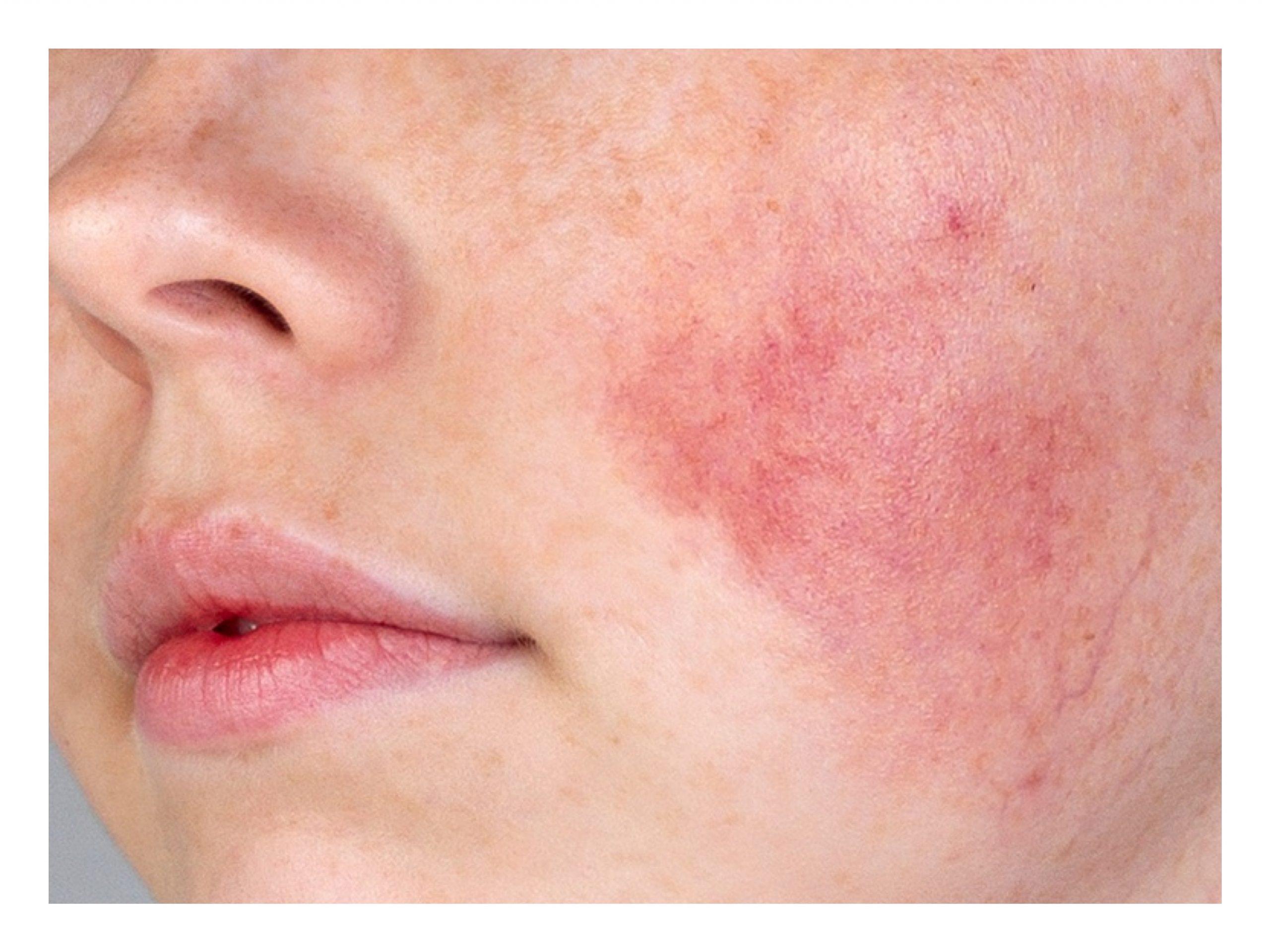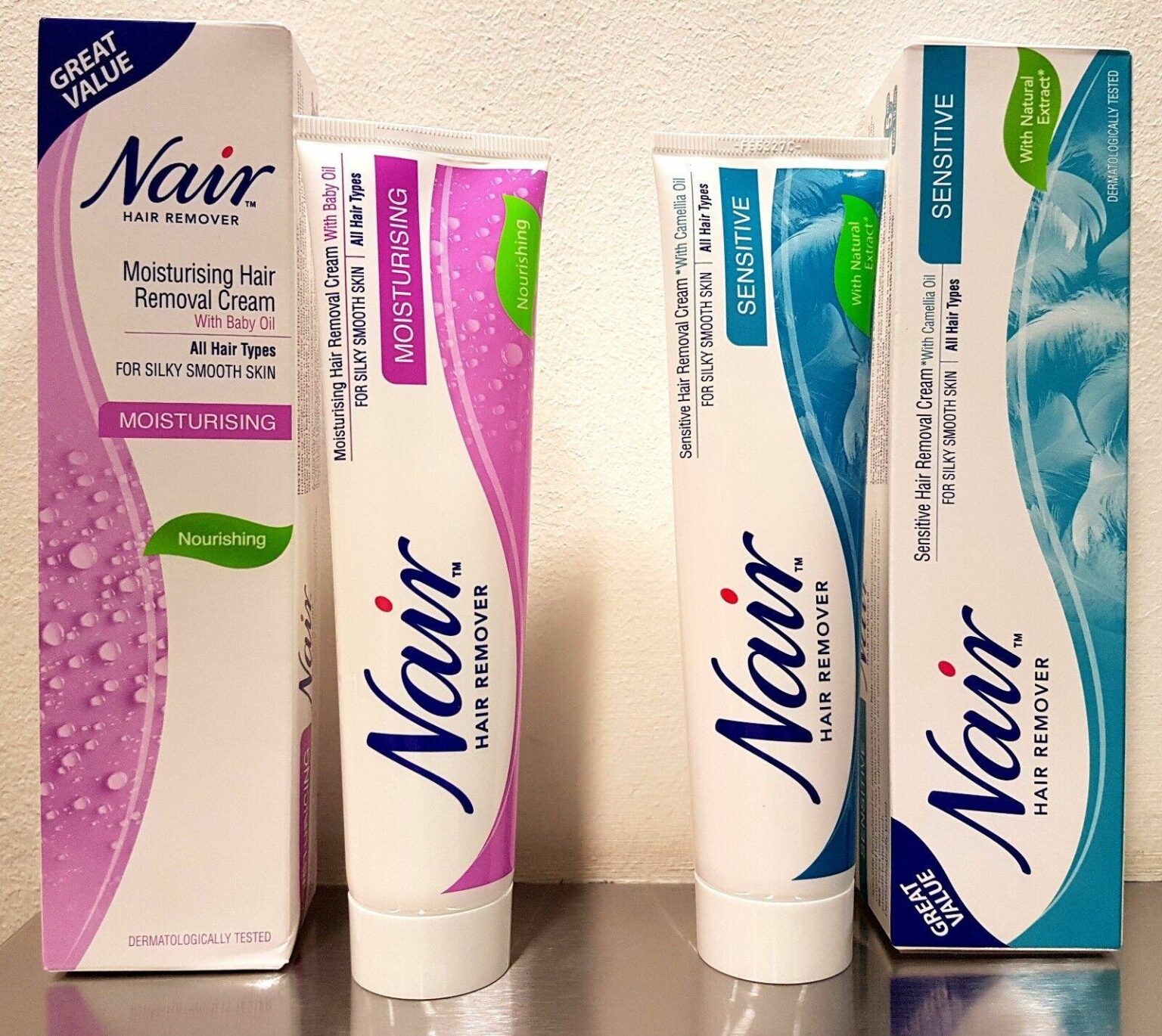Picture this: it’s a sun-drenched morning, and you’re preparing for a beach day. Sunscreen? Check. Swimsuit? Check. Smooth, hair-free skin? Almost there. But as you reach for that trusty bottle of Nair, a question floats into your mind like a storm cloud on an otherwise clear day—”Am I in for smooth sailing or rough seas with this hair removal choice?”
You’re not alone. Many have cast off into the ocean of hair removal options, and Nair often presents itself as a seemingly effortless way to depilate. But beneath its creamy surface lie potential risks and rewards that every sailor, or rather, user, should navigate with care.
In this article, we’ll traverse the waters of Nair hair removal, exploring the hidden shoals and sunny bays along the way. Whether you’re a seasoned mariner in the world of at-home beauty treatments or a newbie curious about chemical depilatories, we’ve got the compass to guide your journey. Ready to set sail? Let’s dive in!
Table of Contents
- Unpacking the Ingredients: Whats Really in Nair?
- The Science of Skin Sensitivity: Who Should Be Cautious
- Expert Tips for a Painless Experience: Preparation and Aftercare
- Navigating Common Side Effects: Troubleshooting and Solutions
- When to Steer Clear: Identifying Serious Risks and Alternatives
- Q&A
- Future Outlook
Unpacking the Ingredients: Whats Really in Nair?
Nair is famed for its effortless performance, but when you dive into the list of ingredients, it’s worth asking if everything is as smooth as it seems. Among the key players in this chemical symphony, you’ll find **potassium thioglycolate** leading the charge. This active ingredient works by breaking down the protein structure in hair, causing it to weaken and literally fall apart. But don’t be fooled by its efficiency—this compound can be harsh on your skin, leading to irritation or even burns if left on too long.
Another prominent ingredient is **calcium hydroxide**. Think of it as the sidekick to potassium thioglycolate, acting as a pH balancer to ensure the hair removal process is as effective as possible. However, it comes with its own set of potential downsides. Prolonged exposure can disrupt your skin’s natural pH balance, causing dryness and flaky skin. If you’ve ever wondered why your skin feels Sahara-desert dry after using Nair, calcium hydroxide might be your answer.
But wait, there’s more! The mixture wouldn’t be complete without various **fragrance** components and **preservatives** to improve the product’s shelf life and scent. While these additions make the experience more pleasant, they can also trigger allergic reactions or skin sensitivities. Scents like “Tropical Bloom” or “Cocoa Butter” may sound innocuous, but they often mask a blend of synthetic compounds that might not agree with your skin. Be cautious, especially if you have sensitive skin.
Here’s a quick look at the players in the Nair formula and their roles:
| Ingredient | Role |
|---|---|
| Potassium Thioglycolate | Breaks down hair proteins |
| Calcium Hydroxide | pH balancer |
| Fragrance | Improves scent appeal |
| Preservatives | Enhances shelf life |
In the quest for silky-smooth skin, understanding the cocktail of ingredients in Nair can help you make more informed decisions. Maintaining the balance between effectiveness and safety is crucial. So, while Nair might promise smooth sailing, a closer look at its ingredients reveals waters that could potentially get a bit choppy.

The Science of Skin Sensitivity: Who Should Be Cautious
Understanding skin sensitivity is integral to navigating the landscape of hair removal options. Different skin types respond uniquely to hair removal products like Nair. **People with sensitive skin** may experience heightened reactions to the chemical depilatories found in Nair. These can include burning, redness, and itching, making hair removal feel more like rough seas than smooth sailing. If your skin tends to react strongly to new skincare products or environmental changes, you’re part of the crew that needs to tread carefully.
Certain individuals should approach Nair with caution, particularly those with pre-existing skin conditions. Those with **eczema, psoriasis, or rosacea** may find that the chemicals exacerbate their symptoms. In such cases, patch testing on a small skin area before full application can be a game-changer. The goal is to avoid unpleasant surprises and ensure your skin remains as calm as a serene ocean.
Additionally, people who are **prone to allergies** should be vigilant. Ingredients in hair removal creams can sometimes trigger allergic reactions. Keeping an antihistamine close at hand might not be a bad idea. Here’s a quick reference to some common allergens found in hair removal products:
| Potential Allergen | Found In |
|---|---|
| Thioglycolic Acid | Nair, Veet |
| Fragrance | Multiple Brands |
| Preservatives | Most Hair Removal Creams |
Pregnancy can also bring about **unexpected skin changes**. Hormonal shifts may increase skin sensitivity, making it crucial for expecting mothers to select their hair removal methods cautiously. Patch testing becomes even more essential during this period. Remember, it’s about balancing the pursuit of smooth skin with the necessity to maintain overall skin health, ensuring every expedition ends with a safe harbor.

Expert Tips for a Painless Experience: Preparation and Aftercare
Before diving into the world of Nair hair removal, a little prep can go a long way in ensuring a smooth journey. **Patch testing** is your best friend; apply a tiny amount of Nair on a small section of your skin and wait 24 hours to ensure you don’t have an adverse reaction. Shaving works best on clean skin, so hop in the shower first to wash away oils and dirt. **Exfoliation** prior to using Nair is key — it helps rid your skin of dead skin cells and opens up hair follicles, allowing the product to work more efficiently. And don’t forget, always read the instructions on the bottle to achieve optimal results.
Once you’ve finished, it’s crucial to give your skin some tender loving care. **Moisturize** generously with an alcohol-free lotion to prevent dryness and irritation. Aloe vera gel or a vitamin E-infused cream can be particularly soothing. If you experience any slight redness or sensitivity, a cool compress can work wonders. For the first 24 hours, avoid any activities that could aggravate your skin further, like sunbathing or diving into a chlorine-filled pool.
Here are some quick aftercare tips to keep your skin silky smooth:
- Wear loose-fitting, breathable clothing to avoid irritation.
- Reapply moisturizer as needed, focusing on hydration.
- Avoid fragranced products that could irritate sensitive skin.
let’s break down the key dos and don’ts in a handy table:
| Do | Don’t |
|---|---|
| Patch test first | Skip exfoliation |
| Moisturize generously | Expose to sun immediately |
| Use cool compress | Wear tight clothing |

Navigating Common Side Effects: Troubleshooting and Solutions
Experiencing tingling or minor irritation when using Nair is relatively common. This sensation often stems from the active ingredients beginning to dissolve hair beneath the skin’s surface. However, severe stinging or burning isn’t normal and could signal a sensitivity to the product. **First and foremost**, always conduct a patch test before fully committing. If discomfort occurs, **rinse the area immediately** and consider trying a formula designed for sensitive skin. Remember, every person’s skin reacts differently, so what works for a friend might not work for you.
- **Patch test**: Apply a small amount on a discreet area.
- **Time it**: Don’t exceed the recommended application time.
- **Moisturize**: Use a gentle, fragrance-free cream post-removal.
Redness and bumps are another common side effect when using Nair. They can look alarming but generally subside within a few hours. For immediate relief, apply a cold compress or a soothing aloe vera gel. **Hydrocortisone cream** may also help to reduce inflammation. For those with highly sensitive skin, reconsidering the frequency of use is essential, as overuse can exacerbate irritation. Sometimes, alternative hair removal methods like shaving or waxing might be more suitable for ultra-reactive skin types.
| Side Effect | Solution |
|---|---|
| Tingling | Patch test and sensitve skin formulas |
| Redness | Cold compress, aloe vera |
| Burning | Immediate rinsing, hydrocortisone cream |
Some users may notice **darkened skin** patches in areas where Nair has been applied. This hyperpigmentation can be distressing but is usually temporary. **Exfoliating every few days** can help even out your skin tone faster. It’s also crucial to avoid sun exposure on treated areas immediately after use, as this can worsen pigmentation. Wearing loose-fitting clothing post-application can help avoid friction that might irritate the skin further.
if you find that ingrown hairs are a persistent issue after using Nair, gentle exfoliation is your best friend. A **mild exfoliating scrub** will help keep hair follicles unclogged and prevent hairs from becoming trapped beneath the skin. Consider incorporating products with **salicylic acid** or **glycolic acid** into your skincare routine, as these ingredients are known to prevent ingrowns effectively. Keeping your skin moisturized will also promote healthier hair growth and minimize future ingrown hairs.

When to Steer Clear: Identifying Serious Risks and Alternatives
If you’ve been contemplating the use of Nair for a smooth, hair-free experience, it’s essential to know when it might be better to opt for a different method. While Nair can be incredibly effective for many, certain risks could outweigh the benefits. **Skin irritation** is one of the primary concerns. If you have sensitive skin or are prone to allergies, using a chemical hair remover might result in rashes, redness, and even burning sensations. **Patch testing** in a small area is always advised before applying the product more liberally.
Apart from skin sensitivity, consider the **application zones**. Nair is typically not recommended for **sensitive areas** such as the face, genitals, and any regions with broken or inflamed skin. The chemicals in Nair can cause significant discomfort and potential chemical burns in these areas. For these sensitive zones, alternatives such as **waxing** or even using an **electric trimmer** might be more suitable and less risky.
Another aspect to ponder is the **chemical composition** of Nair. For some individuals, the chemicals used in hair removal creams can trigger adverse reactions such as respiratory issues or dermatitis. If you’re seeking something more natural, consider **sugar waxing** or **epilators** which don’t involve harsh chemicals and are generally safer for the skin. Below is a quick comparison table for alternatives to Nair:
| Method | Pros | Cons |
|---|---|---|
| Waxing | Long-lasting Fewer chemicals |
Painful Possible ingrown hairs |
| Shaving | Quick Inexpensive |
Short-lasting Potential for cuts |
| Epilation | Long-lasting No chemicals |
Painful Time-consuming |
When considering **long-term hair removal** options, procedures like **laser hair removal** and **electrolysis** could be appealing. While these methods require a larger financial investment, they offer the benefit of permanence, drastically cutting down the need for routine maintenance. As always, consult a dermatologist for any persistent issues or before trying new products if you have skincare concerns. By weighing the risks and exploring alternatives, you can ensure your journey to a hair-free existence is as smooth as possible!
Q&A
Q: What is Nair hair removal and how does it work?
A: Ahoy, grooming adventurers! Nair hair removal is your first mate in the quest for smoother skin. It’s a depilatory cream that uses chemicals to break down the protein structure of your hair, allowing you to simply wipe it away. Essentially, it dissolves the hair right at the surface, leaving you as smooth as a calm sea under a full moon.
Q: Is using Nair safe for everyone?
A: Not all treasure chests are filled with gold, and not all skin types take kindly to Nair. While many pirates of the personal care world find it perfectly safe, those with sensitive skin or allergies should be cautious. It’s always smart to do a patch test before your maiden voyage. A small dab on your forearm can reveal how your skin will react to this chemical concoction.
Q: What are the common side effects of using Nair?
A: Even the most seaworthy vessel can encounter choppy waters. Common side effects of using Nair include redness, irritation, and a burning sensation. These are usually minor and temporary, but like a sudden squall, they can be quite surprising. Should you experience any severe discomfort or a reaction worthy of a sea monster’s wrath, rinse off immediately and abandon ship!
Q: Are there specific areas where Nair should not be used?
A: Just as you wouldn’t steer your ship through a rocky reef, there are certain areas best avoided with Nair. Sharp turns like the eyebrows, near the eyes, and other very sensitive regions (ahem, you know the spots) should be navigated with extreme caution. Consult the map, or in this case, the instructions on the package, to ensure smooth sailing.
Q: How can one minimize the risks when using Nair?
A: To keep your journey on an even keel, heed these navigation tips. First, always do that patch test we discussed. Second, don’t leave the cream on longer than instructed—your skin isn’t as tough as barnacles! Third, rinse thoroughly with cool water afterwards to soothe your skin and remove any lingering residue. Last, moisturize well to keep your skin hydrated and as happy as a clam at high water.
Q: Are there natural alternatives to Nair?
A: If the chemical squall is too fierce for your liking, you may want to explore the tranquil shores of natural alternatives. Sugaring, waxing, and good ol’ shaving are popular harbors. You can even brew up your concoction of natural hair removers using ingredients like honey, lemon, and turmeric—ideal for the eco-friendly sailor.
Q: What should one do if they experience an adverse reaction from Nair?
A: If you find yourself amidst stormy seas with an adverse reaction, don’t panic! Immediately rinse off the cream with lukewarm water, apply a mild, fragrance-free moisturizer, and steer your ship towards a haven of aloe vera gel. If the reaction is severe or your skin feels like it’s being battered by waves, it might be wise to consult a dermatologist to chart the best course forward.
Q: Final thoughts on using Nair?
A: Nair can be a trusty shipmate on your voyage to silky skin, but always be prepared for the potential rough seas. Sailing with caution, reading the stars (or instructions), and knowing your skin’s temperament will ensure that your grooming adventures are more about smooth sailing than perilous waves. Here’s to a hairless horizon, matey!
Future Outlook
As we sail back to shore after navigating the waters of Nair hair removal, it’s clear that this journey isn’t one-size-fits-all. Whether you’re floating towards the island of smooth skin or steering clear to avoid potential storms, being aware of both the sunny and cloudy aspects helps you chart the best course. Remember, beauty routines are personal voyages, and listening to your skin’s unique signals is your trusty compass.
Anchors aweigh, dear readers, as you set sail with newfound knowledge, ready to embark on smoother, more informed adventures. So go ahead, grab that sunscreen, let the wind tousle your hair, and don’t forget—every now and then, it’s okay to pause and enjoy the view from where you are. Happy sailing!






